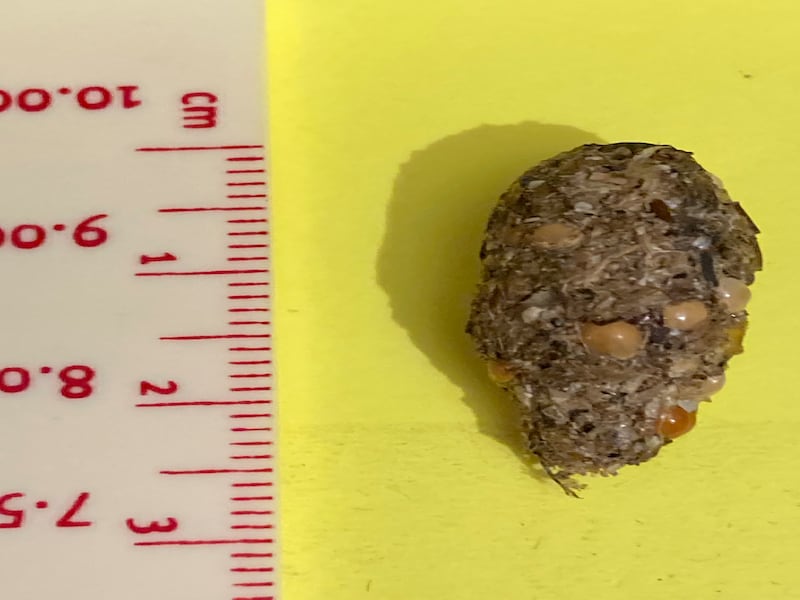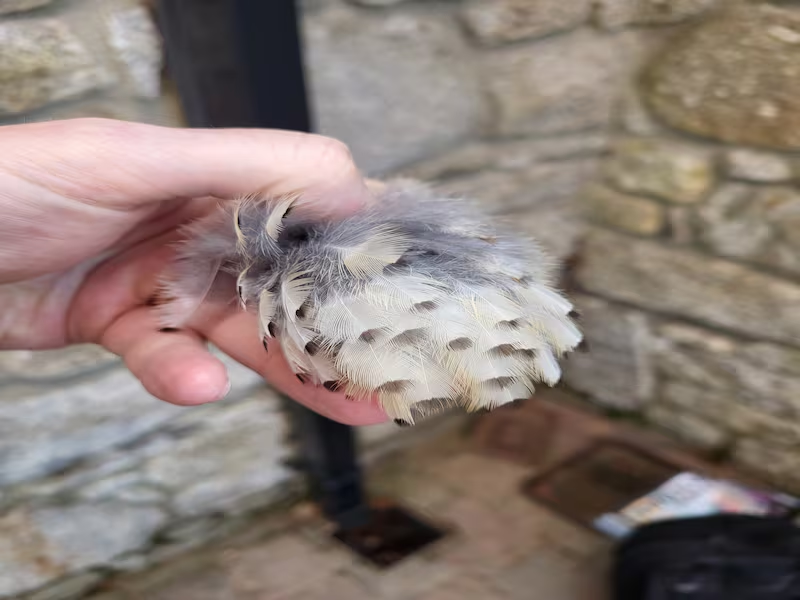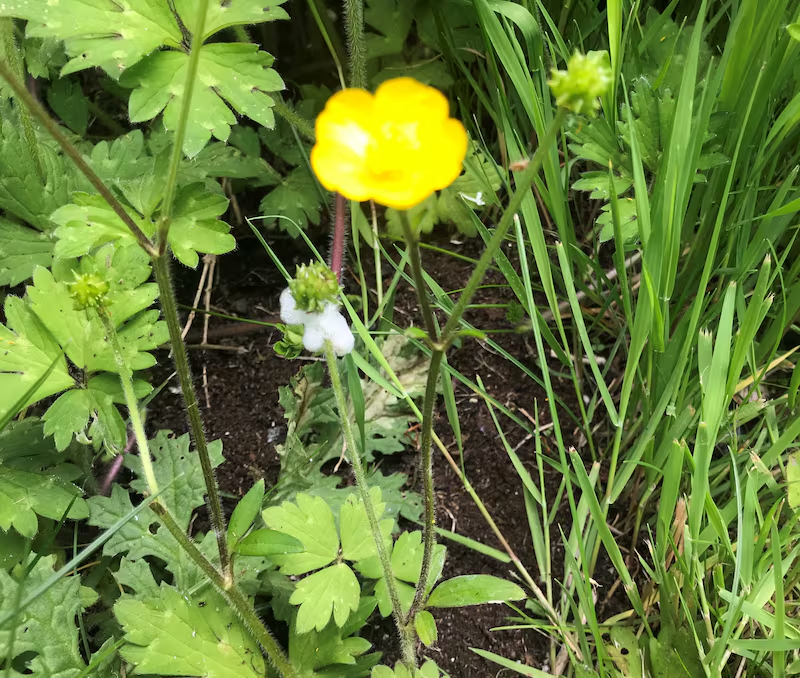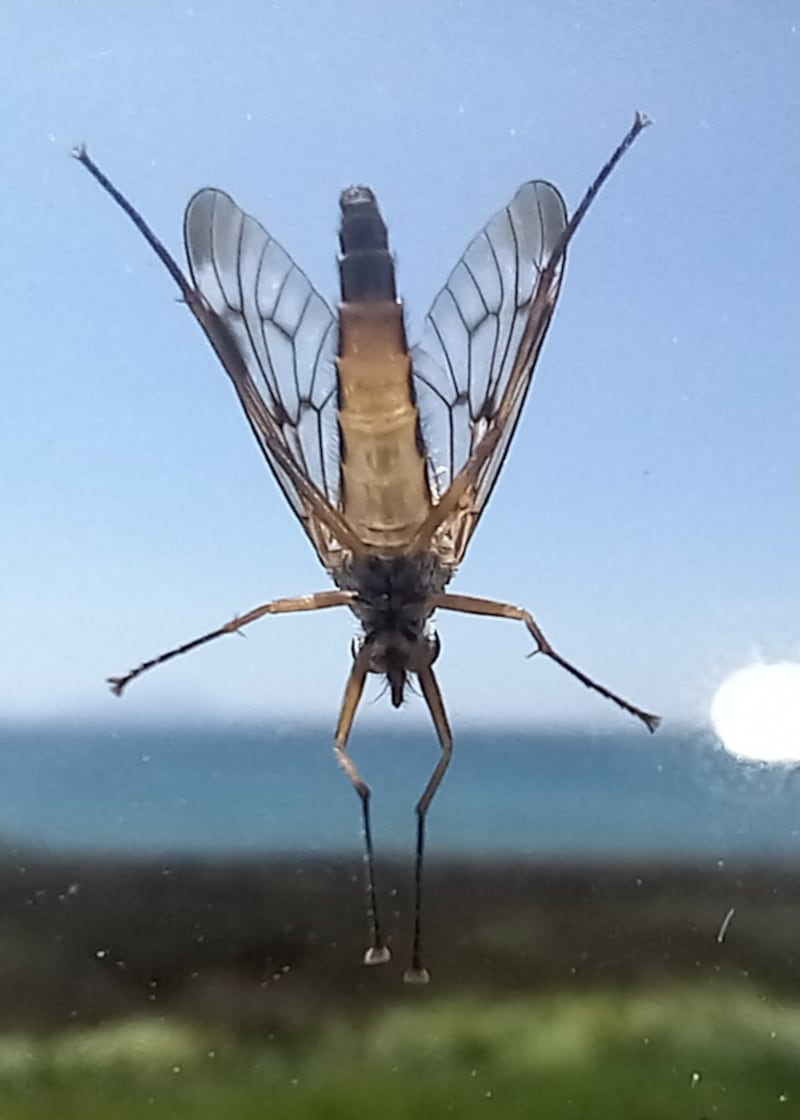I spotted this on dillisk seaweed on the Connemara coast in February. What is it? Anja Murray, Co Cavan
These amazing-coloured rings are the eggs of the banded chink snail (Lacuna vincta). This is a small green and brown stripy sea snail that feeds on tiny algae that grow on larger seaweeds on the lower shore. Each spawn mass contains 1,000-1,500 eggs. The egg mass has a definite ring doughnut shape and the colour of the mass varies with diet. Unlike land snails, which are hermaphrodite, sea snails have separate sexes. The female can lay up to 55,000 eggs in the season, after which she dies.

I found this behind the grate in my fireplace, which is a gas fire and is lit most evenings. It feels hard and very light and has no smell as far as I can tell. It looks like some sort of pellet left behind by a bird. What might it be? Eithne Mackell, Co Dublin
Niall Hatch of Birdwatch Ireland suggests it is a pellet produced by a crow, such as a rook, hooded crow, jackdaw or magpie. Irish members of the crow family all produce pellets that can contain almost anything, given the variety of different foods they eat. You would hardly have a jackdaw’s nest in the chimney if you light the fire most evenings, so the bird must have landed on your chimney and coughed it up, whereupon it fell down behind the grate.
READ MORE

I found an interesting clump of feathers. They were still warm and in a round section all attached. I wonder what it is. Paul Kearney, Co Wicklow
These look like the breast feathers of a mistle thrush. They were plucked out by a predator before it ate the unfortunate bird. Female sparrowhawks could take down a mistle thrush, so this is a likely suspect. Sparrowhawks feed on smaller birds they catch by surprise. They hunt along hedgerows and then suddenly swoop over to ambush the unwary prey.
[ Why does this hard-working bird have a handlebar moustache?Opens in new window ]

I see a lot of cuckoo spit in my garden and on walks, especially on a patches of lavender. How does it get there, which insect uses it, and what is the substance made of and the reason for it? Sarah Fitzgerald
Well, one thing is certain: despite its name, it is not made by a male cuckoo clearing his throat after a bout of sustained calling. It appears at the same time of year as the cuckoo but that is the only connection. It is made by the nymphs of the froghopper. These delicate green creatures with brown eyes suck sweet sap from the plant, pump air into it and exude it as a white froth from their rear ends. This prevents them from drying out and hides them from their enemies, the birds. It must be like living in the centre of an ice-cream cone. The nymph pupates into a brown jumping insect; hence the name froghopper.

I spotted this flying creature on a windowpane in Belmullet. Perhaps you can identify it. Bobby Carty, Co Mayo
Hard to be sure because the photo is of the underside, but it could well be a snipe fly. These rather large flies have long legs, and feet with three pads. The males sit head downwards on tree trunks and make sudden darting flights, similar to the way snipe birds fly – hence the name. The larvae are definitely carnivorous, feeding on the larvae of insects that live in the ground leaf litter, but how the adults feed is not known. Maybe you could observe them closely and find out. They fly from May to July.
Please submit your nature query, observation, or photo with a location, via irishtimes.com/eyeonnature


















